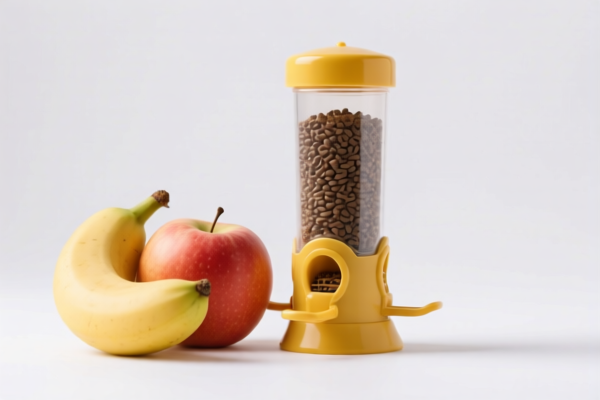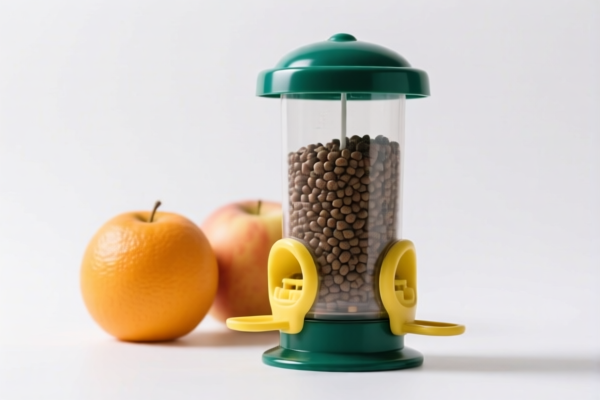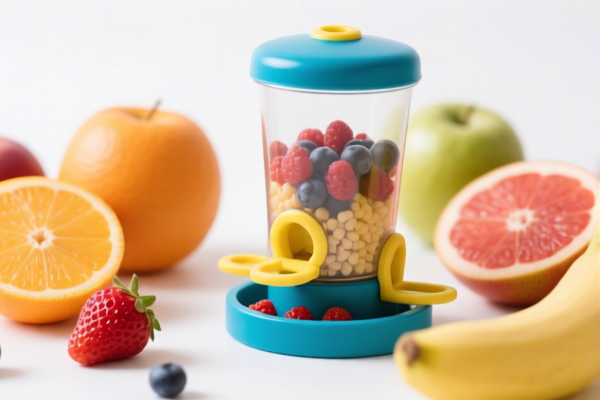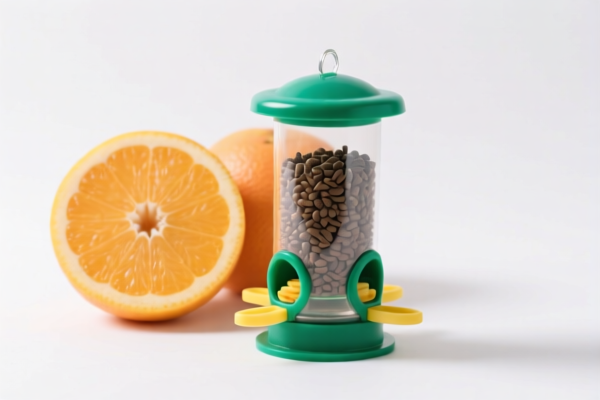| HS Code | Official Doc | Tariff Rate | Origin | Destination | Effective Date |
|---|---|---|---|---|---|
| 8438600000 | Doc | 55.0% | CN | US | 2025-05-12 |
| 8210000000 | Doc | 58.7% | CN | US | 2025-05-12 |
| 3923300010 | Doc | 58.0% | CN | US | 2025-05-12 |
| 3923300090 | Doc | 58.0% | CN | US | 2025-05-12 |
| 3924101000 | Doc | 33.4% | CN | US | 2025-05-12 |
| 3924102000 | Doc | 44.0% | CN | US | 2025-05-12 |
| 4419110000 | Doc | 33.2% | CN | US | 2025-05-12 |
| 4419199000 | Doc | 33.2% | CN | US | 2025-05-12 |
| 4421918800 | Doc | 30.0% | CN | US | 2025-05-12 |
| 4421998800 | Doc | 37.5% | CN | US | 2025-05-12 |




Fruit Feeder
A fruit feeder is a device designed to provide small pieces of fruit, often to birds, insects, or other animals, in a convenient and controlled manner. They come in various designs to suit different species and feeding preferences.
Material
Fruit feeders are commonly constructed from the following materials:
- Plastic: Lightweight, inexpensive, and easy to clean. Often used for simpler designs.
- Metal: Durable and resistant to damage from squirrels or larger animals. May require rust-proofing. Aluminum and stainless steel are common choices.
- Wood: Offers a natural aesthetic and can blend into the environment. Requires more maintenance to prevent rot and damage.
- Wire Mesh: Allows for good airflow and drainage, particularly useful for softer fruits.
- Glass/Acrylic: Used in some specialized feeders for visibility and aesthetic appeal.
Purpose
The primary purpose of a fruit feeder is to:
- Supplement Diet: Provide an additional food source, especially during times when natural fruit availability is low (winter, early spring).
- Attract Wildlife: Encourage birds and other animals to visit a specific location for observation and enjoyment.
- Provide Nutrition: Offer essential vitamins and minerals found in fruit.
- Rehabilitation: Used in wildlife rehabilitation to provide soft foods to injured or orphaned animals.
Function
Fruit feeders typically function by:
- Holding Fruit: Providing a contained space for fruit pieces.
- Accessibility: Allowing animals to easily access the fruit, often through holes or mesh openings.
- Protection: Shielding the fruit from rain, sun, and unwanted larger animals (depending on the design).
- Drainage: Preventing fruit from rotting by allowing excess moisture to escape.
Usage Scenarios
- Backyards/Gardens: Attracting birds to provide visual interest and pest control.
- Orchards: Providing supplemental food for fruit-eating birds, potentially reducing fruit damage.
- Parks/Nature Reserves: Supporting local wildlife populations.
- Wildlife Rehabilitation Centers: Providing a specialized diet for recovering animals.
- Educational Settings: Observing animal behavior and ecology.
Common Types
- Platform Feeders: Simple trays or platforms holding fruit pieces. Suitable for a variety of species but may attract larger animals.
- Mesh Feeders: Fruit is placed inside a wire mesh cage, allowing smaller birds to access it.
- Suet Feeders (adapted): Suet feeders can be used for fruit by replacing suet with fruit pieces.
- Hanging Feeders: Suspended from branches or poles, offering protection from ground predators.
- Orange/Grapefruit Shell Feeders: Half an orange or grapefruit shell is used as a natural feeder, often hung from branches.
- Specialized Feeders: Designed for specific species, with tailored access holes and sizes.
- Pineapple Feeders: A hollowed-out pineapple used as a natural feeder, often used for attracting birds.
Based on the provided information, “fruitfeeder” can be classified under several HS codes, depending on its specific characteristics and function. Here's a breakdown of potential classifications:
- 8438600000: This HS code covers machinery, not specified elsewhere in this chapter, for the industrial preparation or manufacture of food or drink, other than machinery for the extraction or preparation of animal or fixed vegetable or microbial fats or oils; parts thereof – specifically, machinery for the preparation of fruits, nuts or vegetables. If the “fruitfeeder” is a machine designed for preparing fruits (e.g., automated slicing, dicing, or processing), this code is applicable. The total tax rate is 55.0% (0.0% basic tariff, 25.0% additional tariff, and 30.0% additional tariff after April 2, 2025).
- 3924101000: This HS code covers tableware, kitchenware, other household articles and hygienic or toilet articles, of plastics – specifically, tableware and kitchenware: Salt, pepper, mustard and ketchup dispensers and similar dispensers. If the “fruitfeeder” is a plastic dispenser designed for holding and serving fruits, this code may be relevant. The total tax rate is 33.4% (3.4% basic tariff, 0.0% additional tariff, and 30.0% additional tariff after April 2, 2025).
- 3924102000: This HS code covers tableware, kitchenware, other household articles and hygienic or toilet articles, of plastics – specifically, tableware and kitchenware: Plates, cups, saucers, soup bowls, cereal bowls, sugar bowls, creamers, gravy boats, serving dishes and platters. If the “fruitfeeder” is a plastic dish or platter designed for serving fruits, this code may be applicable. The total tax rate is 44.0% (6.5% basic tariff, 7.5% additional tariff, and 30.0% additional tariff after April 2, 2025).
It is important to note that the final HS code classification depends on the specific material, design, and function of the “fruitfeeder”. If the fruitfeeder is made of wood, HS codes 4419110000 or 4419120000 might be applicable.
Customer Reviews
No reviews yet.